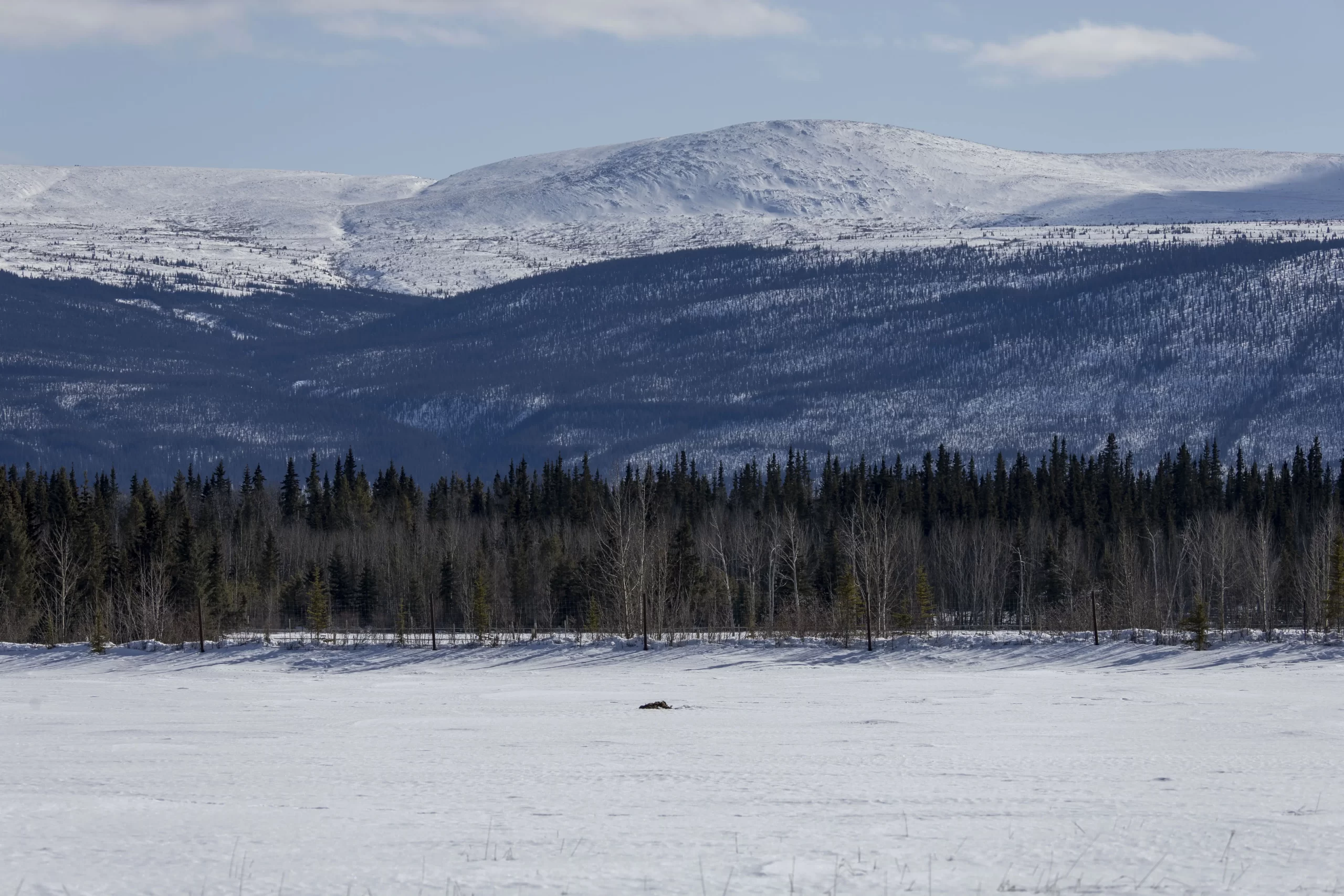
The Humble Dzäna
8 minute read –
When welcoming folks to the Yukon Wildlife Preserve, us interpreters in the Front Cabin often say something along the lines of “you’ll find 10 Yukon animals here,” referring to the ones in our care and pictured on our map. But of course, so many other animals call the Preserve home too. Like the tsäl (sik sik/gopher/arctic ground squirrel) who are the 11th unofficial species that you can find above ground only in the spring and summer!
Another newer resident on the Preserve are the dzäna (muskrats). A mansion of a muskrat lodge has emerged in the moose pond over the past year and has remained visible even when covered by snow this winter! While guiding a bus tour recently, this seemling isolated home became the center of attention while we were looking for the elusive kanday (moose). The visitors and I mused “how many muskrats are in that thing?!” I did know a pair of muskrats had moved into the marsh a couple of years ago, and now maybe there’s a whole family living there hosting many parties (yes, I had to force that line so I can say that a group of muskrats are called a “party”).
But while joking on my tour, I realised that I did not know much about this animal and this inspired me to dedicate some time to the humble muskrat.
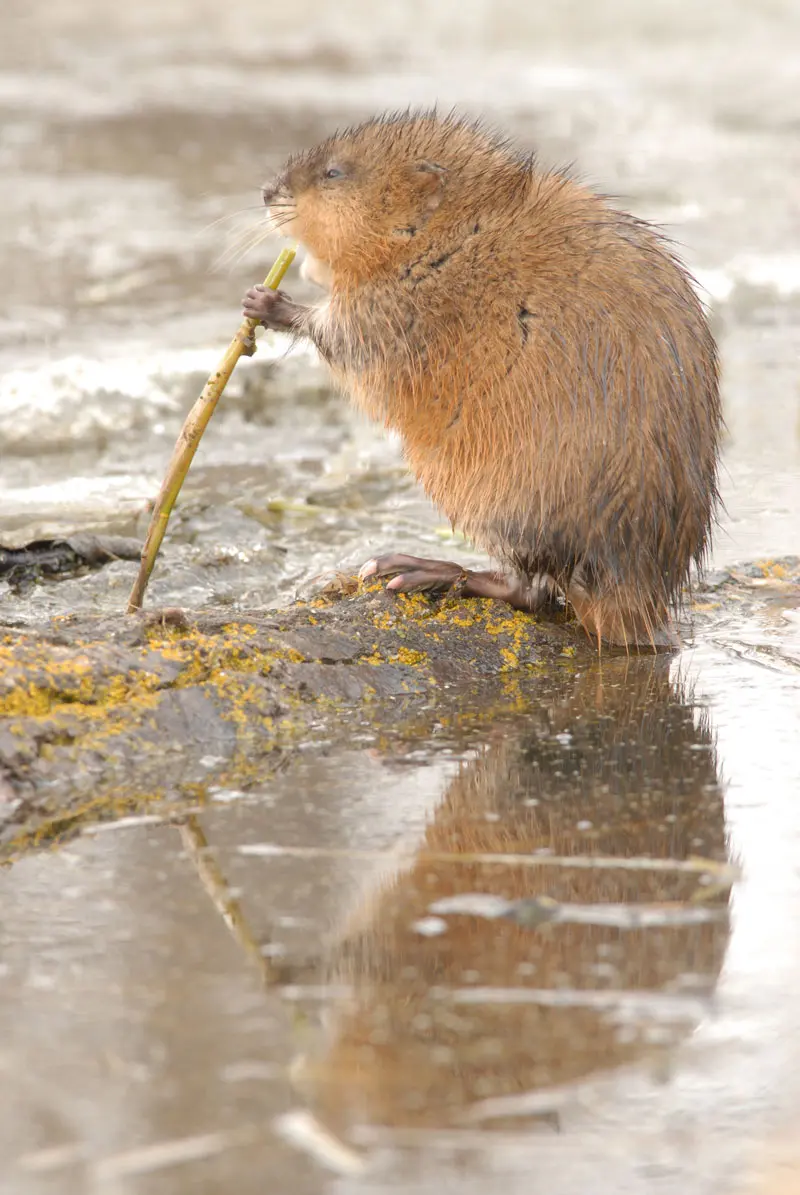
Muskrat copyright and photo credit: Derald-Lobay
Muskrats are often confused with tsà’ (beavers), and though they are very similar, they are not closely related at all. This is a neat example of convergent evolution: two animals may end up looking the same and acting in similar ways because of the shared environment that they live in. Both muskrats and beavers are semi-aquatic rodents, have water-resistant brown and sleek fur, build their lodges in shallow water or along the water’s edge, and forage on the surrounding plants.
When I told my partner that I was writing about muskrats, he made sure that I was including the story of muskrat’s heroic act. Growing up in Manitoba, we both learned about the special place the muskrat holds in Cree and Anishinaabe Creation stories.
Small details can vary with the storyteller but muskrat’s role remains the same.
As written in his book Ojibway Heritage, elder Basil H. Johnston from Wasauksing First Nation begins the story with the Great Flood, where only the birds and water animals survived and Sky Woman came to rest on the back of a turtle. She asked the water animals to dive to the bottom and collect soil so that she can create land. Many animals – the loon, the mink, the beaver – dove down, down, down but none returned with soil. All seemed hopeless. Finally, the little muskrat softly said “I’ll go.” Everyone laughed as there was no way the tiny muskrat could make it to the bottom when all of the other animals had failed. Despite being ridiculed, the determined muskrat disappeared into the water and was gone for a long time. The animals and Sky Woman stared helplessly into the water until muskrat finally floated to the surface. Sky Woman lifted muskrat’s body onto the turtle and there, clutched tightly in muskrat’s paw, was a small clump of Earth. She took the Earth and spread it on the back of the turtle. The wind began to blow while Sky Woman and the animals danced together, spreading the Earth farther until it grew into Turtle Island. The animals celebrated and mourned together for without muskrat’s great sacrifice, Earth and all life would not exist. I personally like the story ending with Sky Woman breathing life back into muskrat’s little body so that he can celebrate too.
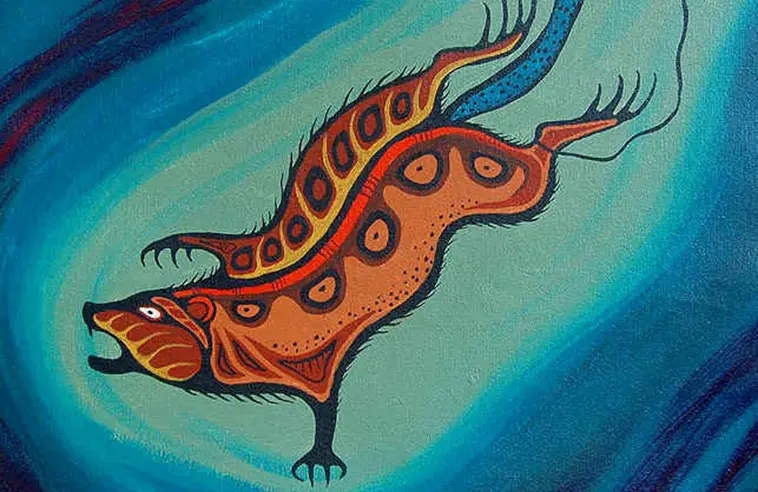
A traditional Anishinabe inspired Painting by: Carl Ray (1943 – 1979) of a muskrat. The Muskrat reminds us to be open to the creative possibilities of living in balance with Creation.
This story intertwines many moral and ethical values tied together with ecological knowledge. Muskrats are indeed very small, weighing only 2-to-4 pounds compared to the much larger 40-to-70 pound beavers. They are incredible swimmers and can dive underwater for 15-20 minutes at a time. When they dive, their heart rate slows and their body temperature plummets to help them conserve oxygen. Small hairs between their toes and their long, rat-like tail helps to propel them through the water. These are all helpful adaptations when you need to forage for plants and food all winter since muskrats do not store food like beavers. It’s no wonder that the small but mighty muskrat could swim to the bottom of the water with all of these traits.
Instead of building dams and lodges made from felling trees like beavers, muskrats build their lodge homes and feeding huts (called push-ups) out of plants like cattails, sedges, and reeds, packed together with mud. As in the story, their front paws are small with long claws for digging and holding building material, and their homes are shaped like the ball of Earth they held on to.
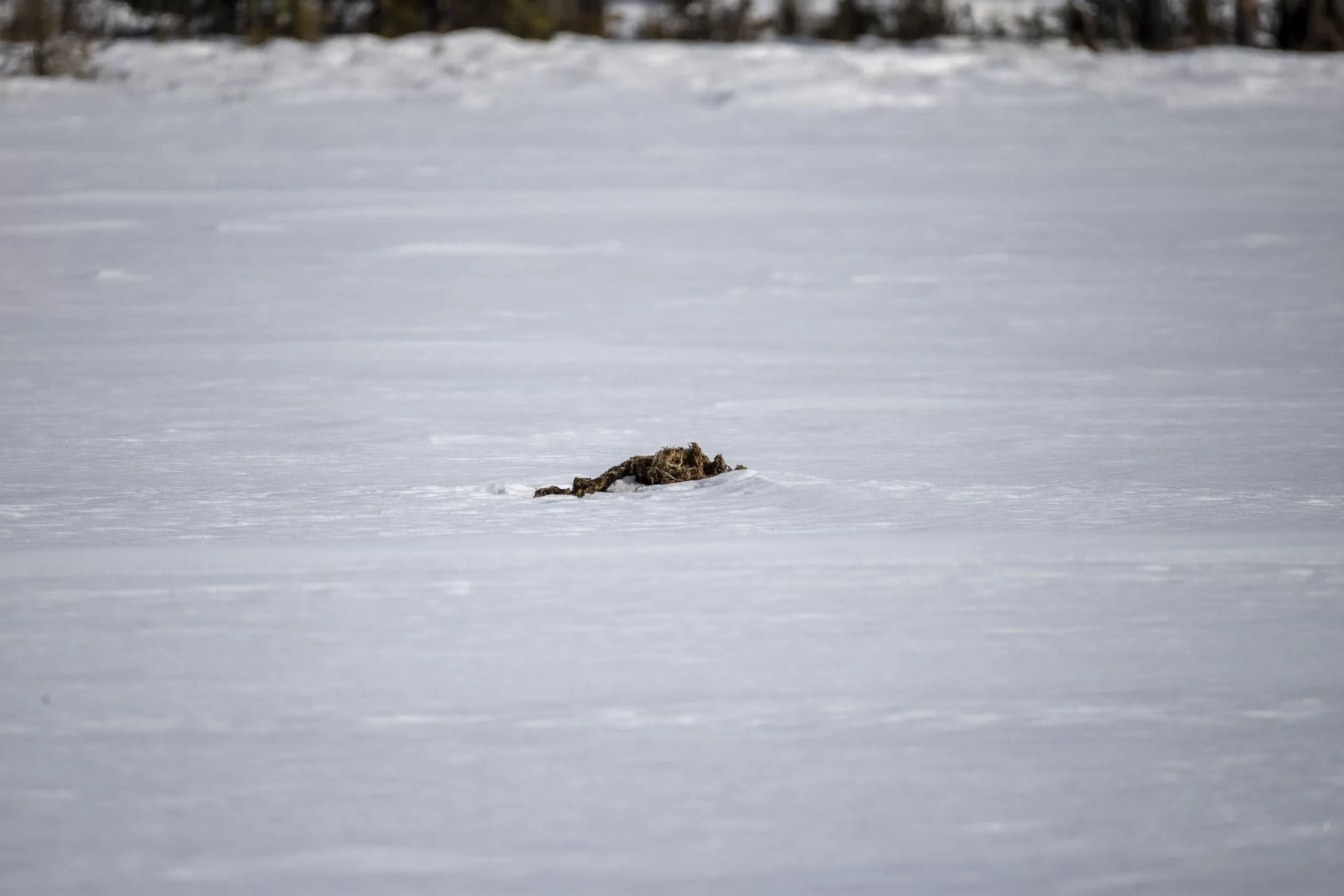
A brown blob of earth pushes up through the snowy icy surface of the moose habitat pond where a muskrat family makes its home. Photo Credit: Rebecca Carter.
In the winter, you may see push-ups on frozen ponds and lakes. When the water begins to freeze, muskrats will chew a hole in the ice and push up clumps of material, creating an enclosed and insulated resting hut on top of the ice. Like ice fishing shacks on a lake, muskrats can pop out of the water and take a break from swimming long distances, have some lunch and take a breather all while staying protected from the harsh elements and predators.
These push-ups are also fast frozen piles of fresh plants that offer higher levels of protein, nitrogen, and other nutrients that are lacking in the low quality winter plants. These push-ups are great food sources for caribou, moose and bison and may help them make it through the winter with a nutrient boost. In the summer, waterfowl and marsh birds lounge and nest on the lodges, while snakes and reptiles use the muskrat tunnels and homes for places to rest and thermoregulate. I can’t help but think of muskrat’s desire and determination to help collect Earth as a parallel to the muskrat’s push-ups and lodges for providing food and shelter for other animals throughout the year.
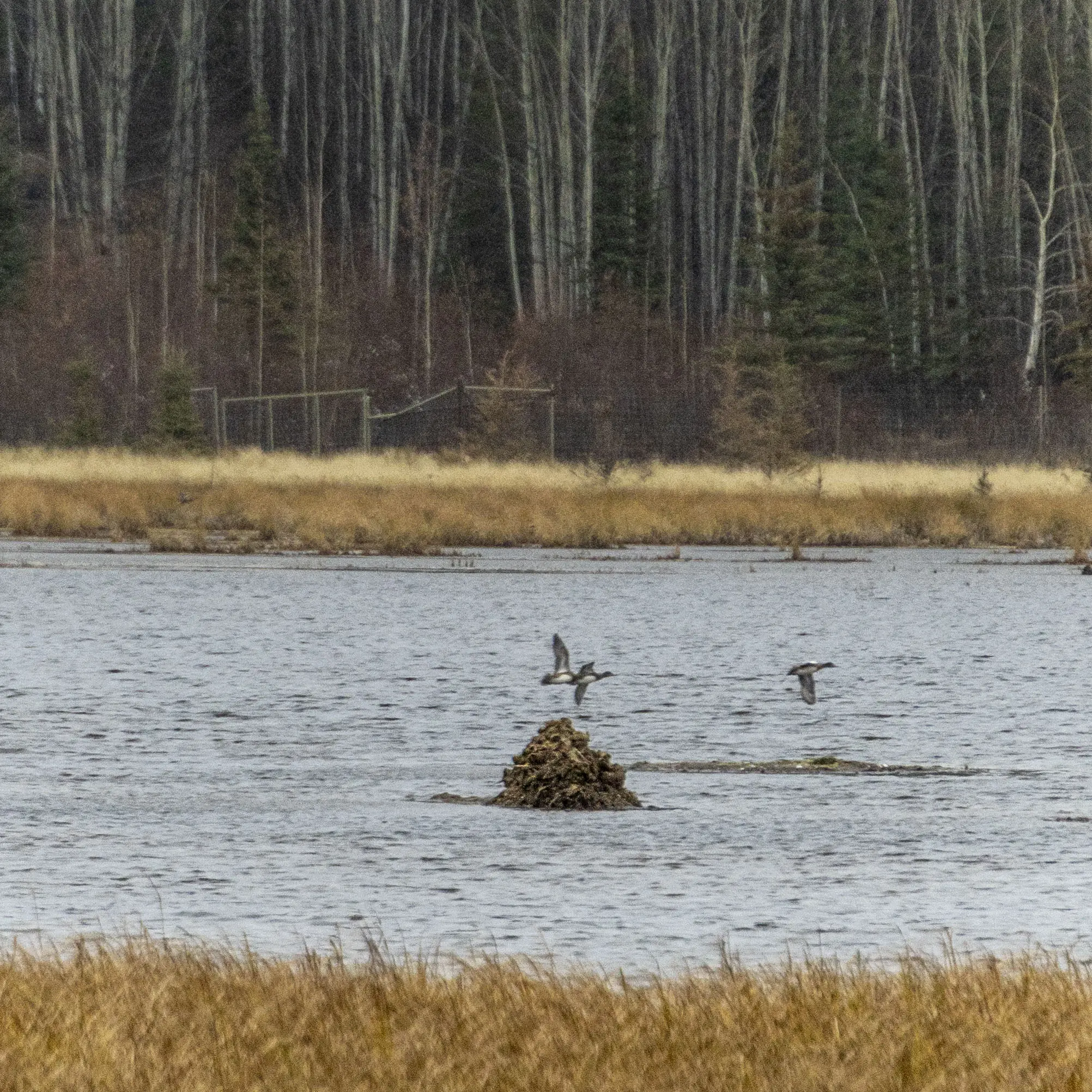
Fall, muskrat pushup with birds soaring above the pushup. Photo credit: Britt Forsythe.
Muskrats are also resilient and adaptable. They can have 2-3 litters per year with an average of 6 kits per litter making their population relatively resistant to disease, predation pressures, and they can survive through drought years by eating a variety of foods and getting water from the plants. Despite this resilience, there is emerging evidence that muskrat populations are declining across North America. The exact cause remains unclear for these declines, but a loss of critical wetland habitats and the connectivity between wetlands may have a large impact on populations.
I read this quote from elder Benton Banai that is fitting here:
“No matter that marshes have been drained and their homes destroyed in the name of progress, the muskrats continue to grow and multiply. The Creator has made it so muskrats will always be with us because of the sacrifice that our little brother made for all of us many years ago when the Earth was covered with water.”
Muskrats play such an important role in the ecology of wetlands, Indigenous cultures and economic importance for trappers that we cannot overlook the muskrats and their habitat needs. One of the values that we can learn from the Creation story is that humans and animals are interconnected and living together harmoniously ensures the survival of all.

From the muskrat, we can learn to be determined and courageous when faced with a seemingly impossible task, to cooperate and help one another, to do acts not for the recognition but because it is the right thing to do, and to honour and respect all creatures regardless of their size. So the next time you visit the Wildlife Preserve, see if you could spot the small, humble, determined dzäna in the marsh. We can and do have a lot to learn from our wildlife companions.
References
Department of Environment. 2024. Common Muskrat. Yukon Government, Department of Enivronment. https://yukon.ca/en/common-muskrat
Errington, P.L. 1939. Reaction of muskrat populations to drought. Ecology, 20(2): 168-186.
Hindle, A.G., et al. 2006. Body cooling and the diving capabilities of muskrats (Ondatra zibethicus) A test of the adaptive hypothermia hypothesis. Comparative Biochemistry and Physiology, 114: 232-241. https://sci-hub.se/10.1016/j.cbpa.2006.03.001
Hinterland Who’s Who. 1986. Muskrat. Environment and Climate Change Canada, Canadian Wildlife Federation. https://www.hww.ca/en/wildlife/mammals/muskrat.html
Jung, T.S., Stotyn, S.A., and Larter, N.C. 2019. Freezer meals: comparative value of muskrat (Ondatra zibethicus) push-ups as late-winter forage for a northern ungulate. European Journal of Wildlife Research, 65:61.https://doi.org/10.1007/s10344-019-1301-7
MacGregor, D. 2013. Teachings from the Muskrat. Muskrat Magazine. https://muskratmagazine.com/teachings-from-the-muskrat/
Sadowski, C., & Bowman, J. 2021. Historical surveys reveal a long-term decline in muskrat populations. Ecology and Evolution, 11(12): 7557-7568. https://doi.org/10.1002/ece3.7588
Yukon Native Language Centre. 2002. Southern Tutchone Noun Dictionary. Retrieved from: https://ynlc.ca/

Rebecca Carter
Senior Wildlife Interpreter
Rebecca joined the Wildlife Preserve in the summer of 2020 after moving from Manitoba to the beautiful and wild Yukon. Rebecca earned a degree in Biology with honours from the University of Winnipeg studying behaviour in mule deer (one of her top 20 favourite animals.. it’s hard to choose!). She loves connecting with others through nature and sharing stories and knowledge about the animals at the preserve with visitors.


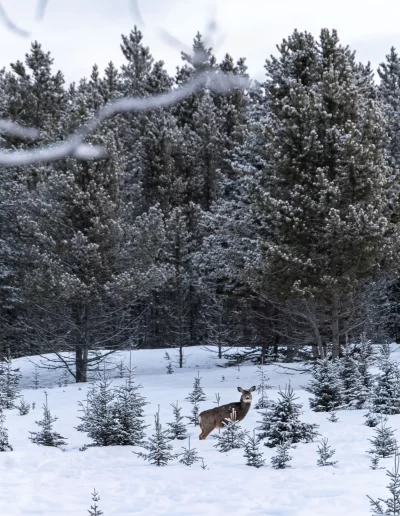
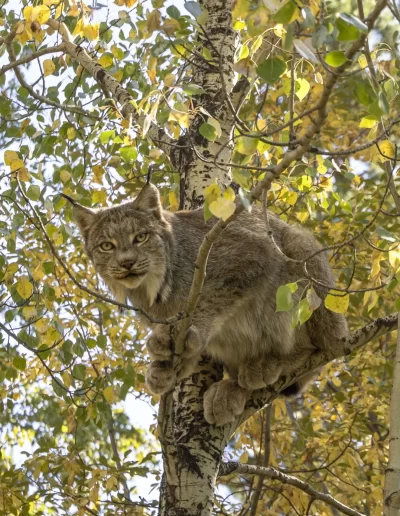
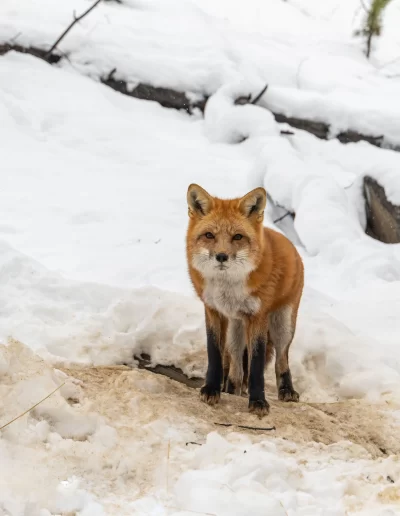
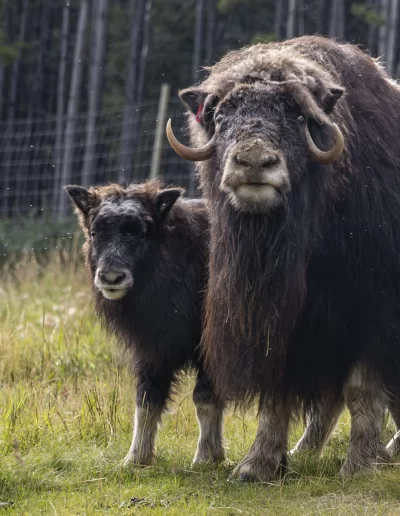
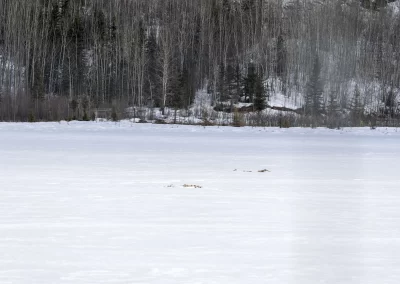
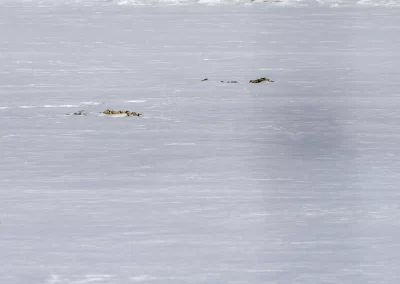
😍 fabulous blog Rebecca, I so enjoyed.
Thanks Johanne! I’m glad you enjoyed it.
Very interesting blog. I now know much more about these tough little critters.
What a beautiful and informative tribute to the muskrat! Thank you for telling their story.
Thanks so much for this. Enjoyable and informative!
Thank you for giving it a read! I thoroughly enjoyed learning about muskrats for this blog.